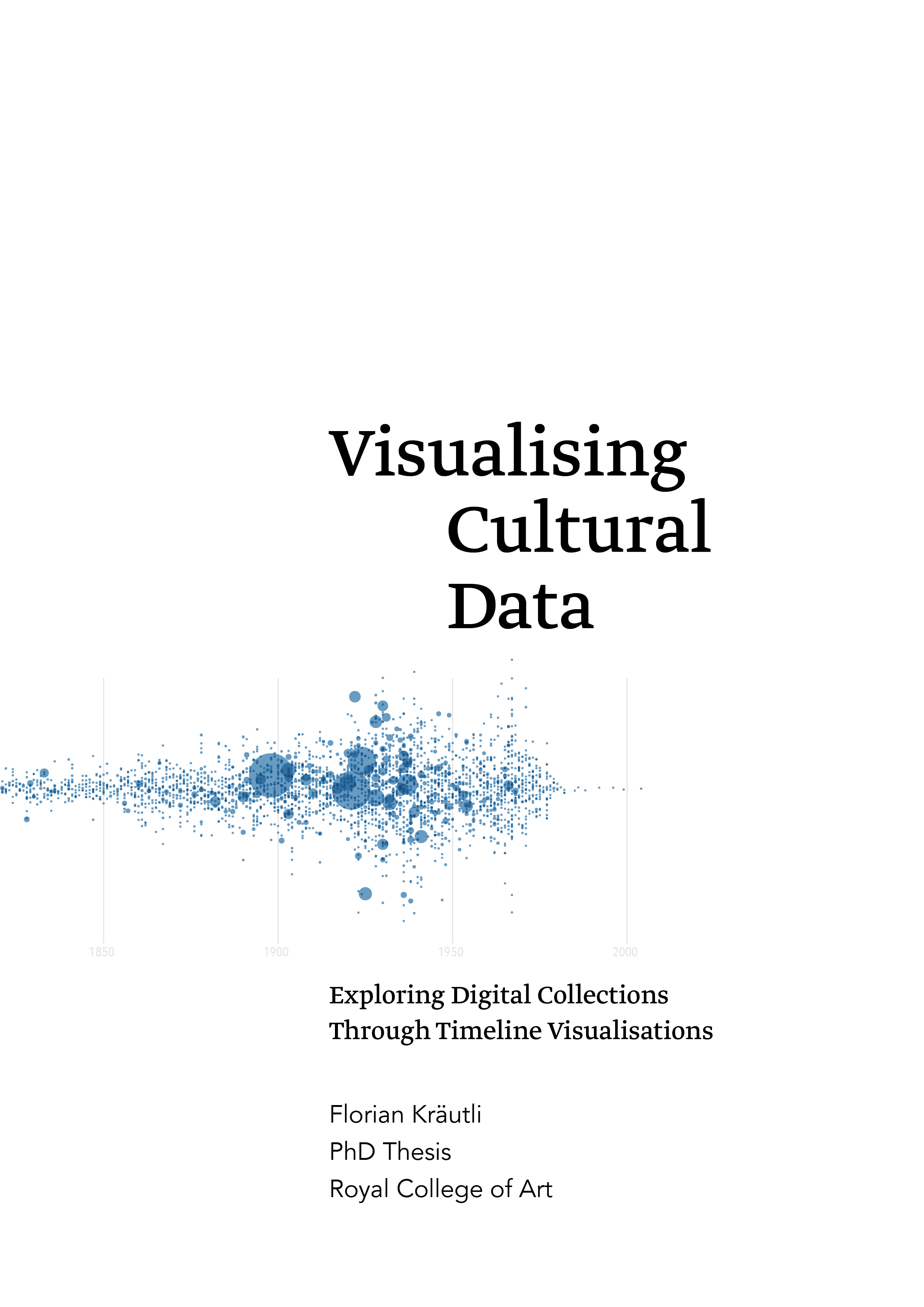
This thesis explores the ability of data visualisation to enable knowledge discovery in digital collections. Its emphasis lies on time-based visualisations, such as timelines.
Although timelines are among the earliest examples of graphical renderings of data, they are often used merely as devices for linear storytelling and not as tools for visual analysis. Investigating this type of visualisation reveals the particular challenges of digital timelines for scholarly research. In addition, the intersection between the key issues of time-wise visualisation and digital collections acts as a focal point. Departing from authored temporal descriptions in collections data, the research examines how curatorial decisions influence collections data and how these decisions may be made manifest in timeline visualisations.
The thesis contributes a new understanding of the knowledge embedded in digital collections and provides practical and conceptual means for making this knowledge accessible and usable.
The case is made that digital collections are not simply representations of physical archives. Digital collections record not only what is known about the content of an archive. Collections data contains traces of institutional decisions and curatorial biases, as well as data related to administrative procedures. Such ‘hidden data’ – information that has not been explicitly recorded, but is nevertheless present in the dataset – is crucial for drawing informed conclusions from digitised cultural collections and can be exposed through appropriately designed visualisation tools.
The research takes a practice-led and collaborative approach, working closely with cultural institutions and their curators. Functional prototypes address issues of visualising large cultural datasets and the representation of uncertain and multiple temporal descriptions that are typically found in digital collections.
The prototypes act as means towards an improved understanding of and a critical engagement with the time-wise visualisation of collections data. Two example implementations put the design principles that have emerged into practice and demonstrate how such tools may assist in knowledge discovery in cultural collections.
Calls for new visualisation tools that are suitable for the purposes of humanities research are widespread in the scholarly community. However, the present thesis shows that gaining new insights into digital collections does not only require technological advancement, but also an epistemological shift in working with digital collections. This shift is expressed in the kind of questions that curators have started seeking to answer through visualisation. Digitisation requires and affords new ways of interrogating collections that depart from putting the collected artefact and its creator at the centre of humanistic enquiry. Instead, digital collections need to be seen as artefacts themselves. Recognising this leads curators to address self-reflective research questions that seek to study the history of an institution and the influence that individuals have had on the holdings of a collection; questions that so far escaped their areas of research.